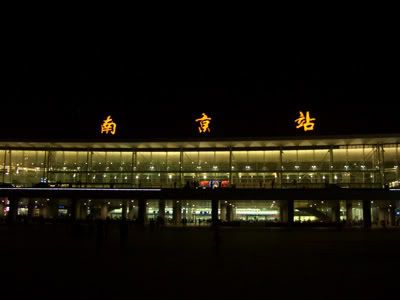We got out of the station and bought the 8.15pm return ticket (44RMB), which departs at the main train station. The time is 12pm when officially begin our tour. Based on the map, we should be able to catch a view of Chang Jang (长江) and the famous bridge (长江大桥) at just a 5 minutes walk away from the West station.
It was quite disappointing when we got to the edge of the river as the view is blocked by high walls which demarcate the piers from the main roads. We walked parallel to the walls till we got to the passenger pier at Zhong Shan Pier (中山码头). Thereafter it is a cab ride to our next stop to the South: The Nanjing Massacre museum (南京大屠杀记念馆). When we were about a minute away from our destination, the driver suddenly recalled the museum is closed due to the ongoing subway construction works. We alighted nevertheless at the museum for a few photo shots. I asked one of the museum caretakers sitting next to the gate on the reopening date. She replied that it will be sometime end of next year (that is 2007!!!). I guess they aren't that particular about this memorial as the subway works is given the main priority.
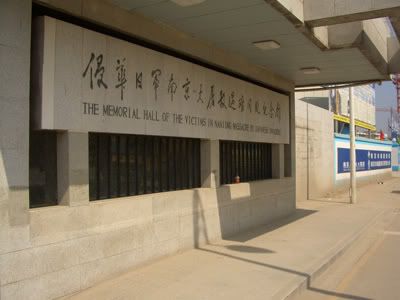
We took the cab eastwards out of the city area. And passed one of the many gates of Nanjing (which has survived since the Ming dynasty), the Zhong Shan Gate (中山门).
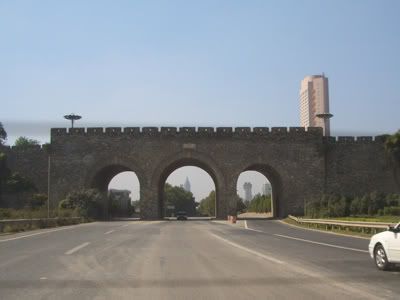
Our first stop for the day at Zi Jin Shan is Ling Gu Si (灵谷寺). We had a quick lunch at the entrance before getting the combine ticket for all the main sights of Zi Jin Shan at a cost of 130RMB. There are quite a number of people peddling cheaper tickets around the entrance, but we skipped them all.
A beautiful lake greeted us past the entrance. The captivating feature of the lake is the multi-coloured trees that surround it. There is actually a history behind it. In which the first emperor of the Ming dynasty ordered ten thousand man to create this lake after noticing the plain entrance to the temple. Thus the lake is call Wan Gong Ci (万工池). I joined in with the rest of the visitors and set my sights upon the tranquil lake.
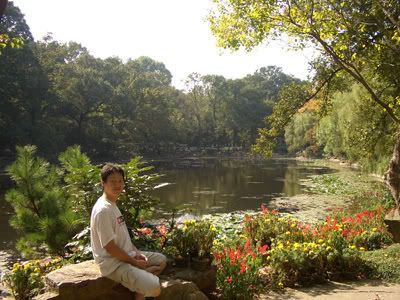
Through the temple gates, the first main hall is Wu Liang Dian (无梁殿). This is the oldest temple structure in the monastery. The rest are all burned down in the last century. It is pretty obvious why this hall is able to stood the test of time. It is made entirely of brick. This hall was used for keeping sutras and other treasures.
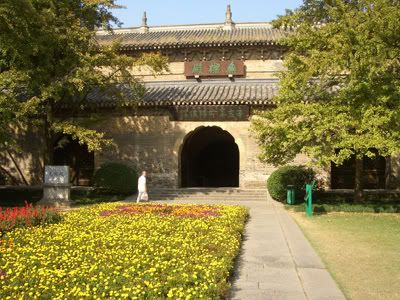
Here is a sneak peek into the inner walls of the halls. It reminded me of those European Catholic monasteries, or a granary where wine are kept for centuries. Now the hall is used as a memorial museum for people who died in the chinese revolution.
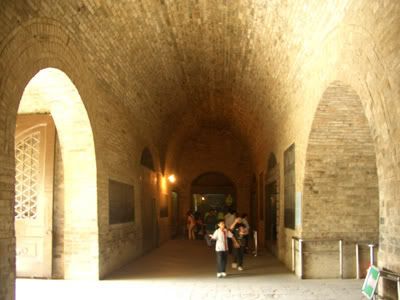
Through the stone hall and to the east is the main temple hall in the monastery. An additional 20RMB has to be paid to visit this temple hall. A relic of the Great Tang monk, Xuan Zang is kept in there.
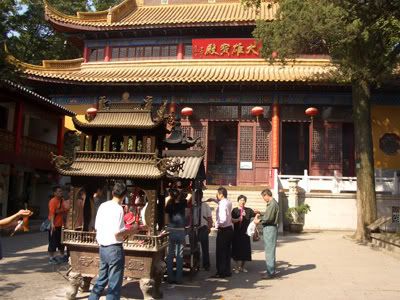
As no photos are allowed on the main relic, I took a snapshot of one of the wooden carvings on the temple wall. It shows a determined Master Xuan Zang who travelled to India in search of the Buddhist teachings.
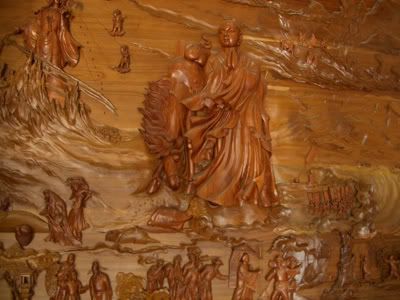
Once past the main hall is the final destination in Ling Gu Si - the Ling Gu pagoda. The pagoda was also built in the last century as a memory for those who lost themselves in the Chinese revolution. It is 9 stories high. We took the challenge and went all the way up to the top.
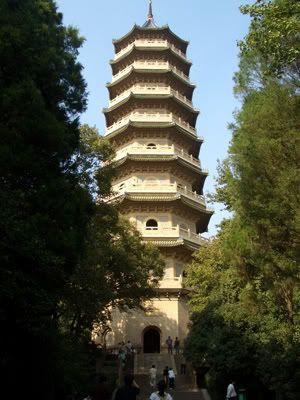
I noticed each storey is repesented by a traditional way of chinese representation. Here we have for level 6.

At the top of the pagoda we have a paranomic view of Nanjing city to the West and the surrounding mountain top. We caught sight of the Zhong Shan memorial below, which is our next stop.
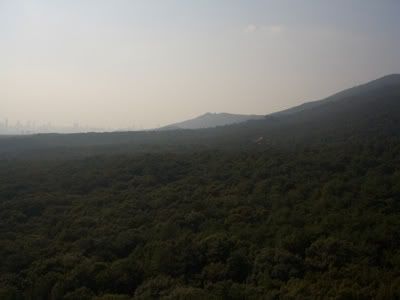
We continue westward by foot. After a 10 minutes walk through the forested track. We arrive at the Sun Zhong San memorial museum. In it showcase the life of the father of modern china as well as the turbulent times of China in those days.
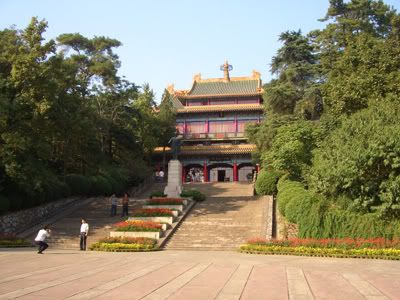
It rounded off showing the vast economic development and achievements China has achieved, which is in line with the vision of Dr Sun.
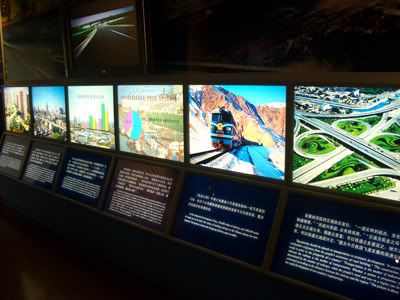
Our combine ticket also grant us entrance to the Academy of Dr Sun Zhong Sun which exhibits a variety of works by Dr Sun. We walked through the academy in 5 minutes and proceeded on our journey westward.
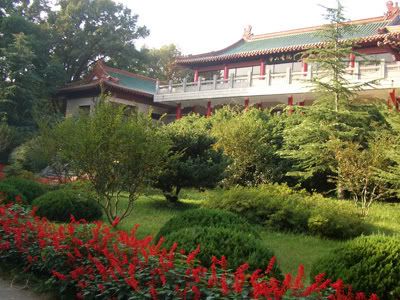
Before the Zhong Shan Mausoleum, there is a forum where people can just laze around and feed the many birds that lives there.

I managed to get a quick snap of a flock of birds flying to the top of the stage.
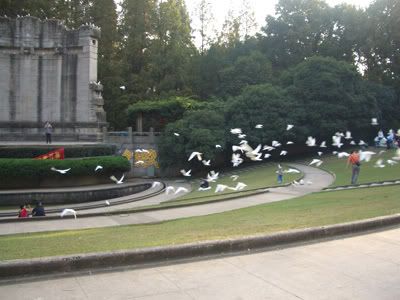
And here we are at the Zhong Shan mausoleum. To get to the main hall, visitors have to scale the three hundred over steps.
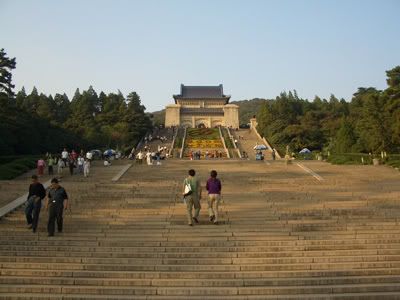
At the top of the memorial, it gives a picturesque view of the surroundings. In the main hall showcase the statue of Sun Zhong San and at the back hall is the main tomb of Sun Zhong San.

After visiting the Zhong Shan mausoleum, we are now going on to our final destination. It is the tomb of the first Ming emperor, Zhu Yuan Zang. The time now is 4.30pm and we have to fasten our pace to the final stop. We decided not to wait for the free shuttle train as we may just have missed it. The walk there is around 15 minutes in all.
A series of entrances lead to the main tomb. The one below actually demarcates the mortal world to the nether world.
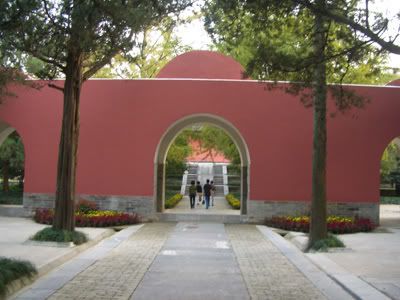
It is said the actual entrance to the Ming emperor tomb follows a peculiar 'C' shape instead of a straight road towards it (as seen in the picture below). The entrance from Zhong Shan mausoleum begins somewhere at the end of the C junction, so we are approaching the tomb fast.
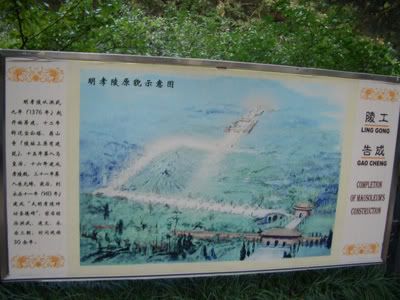
A towering fortress greeted us when we are nearing the tomb. It looks really ancient with a dark passage way leading in.
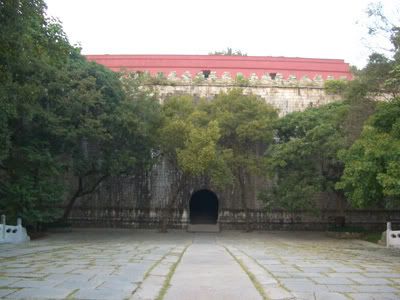
At the end of the dark passage is actually a forested path up the hill. It is said the Ming emperor tomb is somewhere in this hill. So we started climbing up the hill. The entire walk takes 30 minutes in all and is extremely exhausting. We circle the parimeter of the hill once we have scale it. To our side is a long continuous wall which leads back to the fortress. The sun is setting and it is really spooky to be walking through the forest at this time.
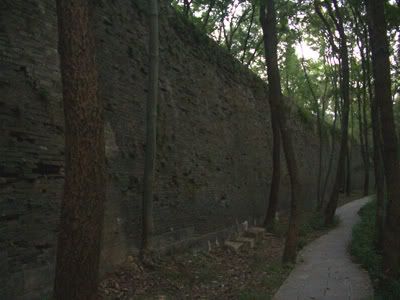
Finally we departed the fortress and is racing against time to reach our final stop in Zi Jin Shan. The actual C entrance to the tomb. It has been shown in the pictures that statues line the path to it. The picture taken below is using a night scene shot. In reality, it is extremely dark and is barely illuminated by the street lamps.
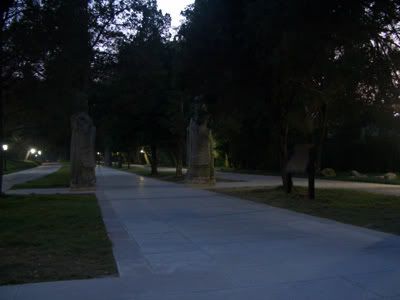
We took a bus out to the nearest station as we have difficulty hailing a cab at this time. From the bus station we took the cab to the Da Qiao. The driver dropped us at the start of the bridge and told us to walk straight up in order to catch a view of the bridge. After walking 10 minutes or so, we find it to be too far away. Here is a photo shot of the bridge at night just before we made a U-turn.

And finally we are back to Nanjing station after a whole day of walking and adventure in the nature park of Nanjing.
